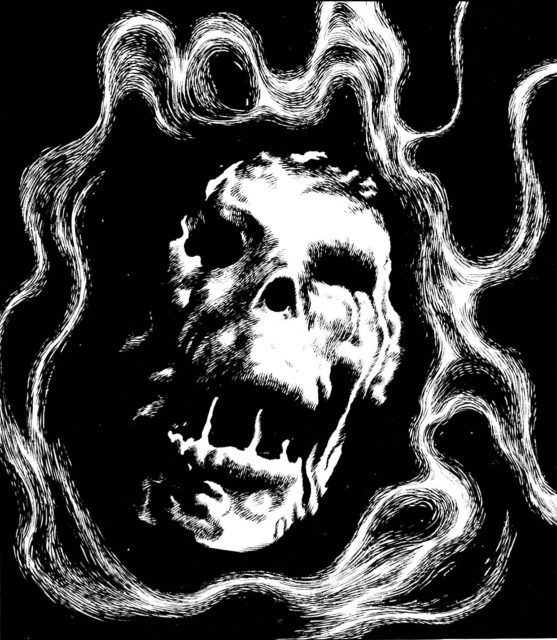 Everybody’s immanentizing the apocalypse these days. You elect one little handful of fascists across a planet already ravaged by the effects of unchecked capitalism and everyone decides it’s the end of the world! Anyway, as end-times scenarios go, one of my favorite examples – is that the right word here, favorite? – has been the insect apocalypse. I recall (though not clearly enough to remember the name) a story from Alfred Hitchcock’s Mystery Magazine about ants exacting their revenge on humans that put such a scare in me as a teen that I refrained from stomping on the formic-acid-spewing little bastards for decades; Phase IV, the only feature film ever directed by graphic design megastar Saul Bass, concerned itself with ants mutating into the new dominant species on Earth and likewise laid a real whammy on my brain. What could be more powerful, as the Bible wisely cautions, than the weak being made strong?
Everybody’s immanentizing the apocalypse these days. You elect one little handful of fascists across a planet already ravaged by the effects of unchecked capitalism and everyone decides it’s the end of the world! Anyway, as end-times scenarios go, one of my favorite examples – is that the right word here, favorite? – has been the insect apocalypse. I recall (though not clearly enough to remember the name) a story from Alfred Hitchcock’s Mystery Magazine about ants exacting their revenge on humans that put such a scare in me as a teen that I refrained from stomping on the formic-acid-spewing little bastards for decades; Phase IV, the only feature film ever directed by graphic design megastar Saul Bass, concerned itself with ants mutating into the new dominant species on Earth and likewise laid a real whammy on my brain. What could be more powerful, as the Bible wisely cautions, than the weak being made strong?
Which is all to say, I was ready as anyone to be freaked out by the arrival, courtesy of Smudge Manga (an imprint of Living the Line Books), of Mansect. (And what a title!) Originally published way back in 1975 by shonen horror weirdo/genius Shinichi Koga, it is being reprinted in a fine new right-to-left softback with a translation by Ryan Holmberg and new layout and lettering by Sean Michael Robinson. For fans of the genre, it's a real pip, a welcome English-language reintroduction to one of the truly creepy and disturbing stories of the era.
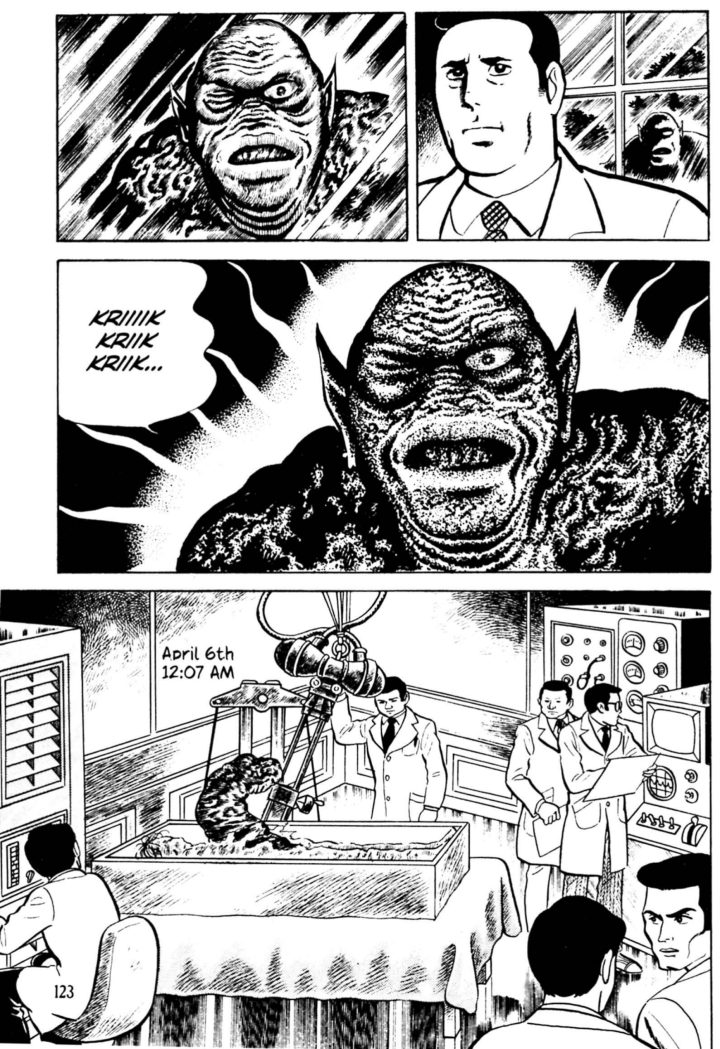
Mansect begins with the travails of one Hideo, an isolated and lonely young man who lives alone in a vast, shadowy house ever since his mother passed away, with his growing collection of bugs, moths, and other squiggling and skittering things his only companions. After receiving a small cut on his leg after walking around the grounds, things take a turn for the worse in the unlucky fellow’s life. Cut to the even younger Sho Goda, who likewise has mother troubles (a theme in the book); his controlling mom uses the memory of his deceased dad to badger him into getting good grades in school. But it’s hard to concentrate on your algebra lessons when you’re aging prematurely and turning into a withered mummy-like shell. Relatable, right, kids? Sheesh!
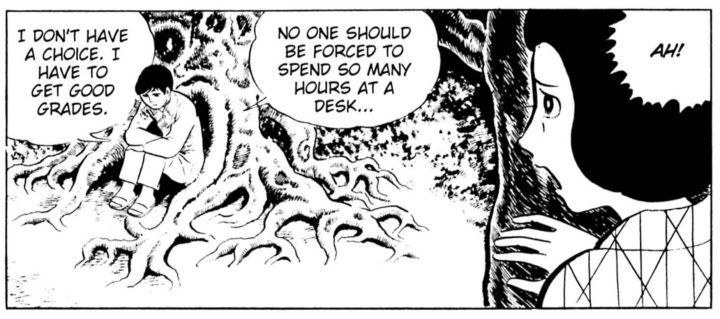
Anyway, things, as you can probably imagine, go downhill from there. The medical community is baffled by a plague of human transformations (and not the good kind), the local middle school runs into some problems not easily solved by the usual intervention of counselors and custodians, mommy issues resurface to no good end, and ramen bowls are used for purposes not originally intended by their makers. It all comes to a head that is both suitably doomstruck and curiously neutral; sure, the omniscient narrator seems to assure us, humanity may ultimately be replaced by a mutant human-insect hybrid that feeds on human blood, but nature is what it is, so what are you gonna do?
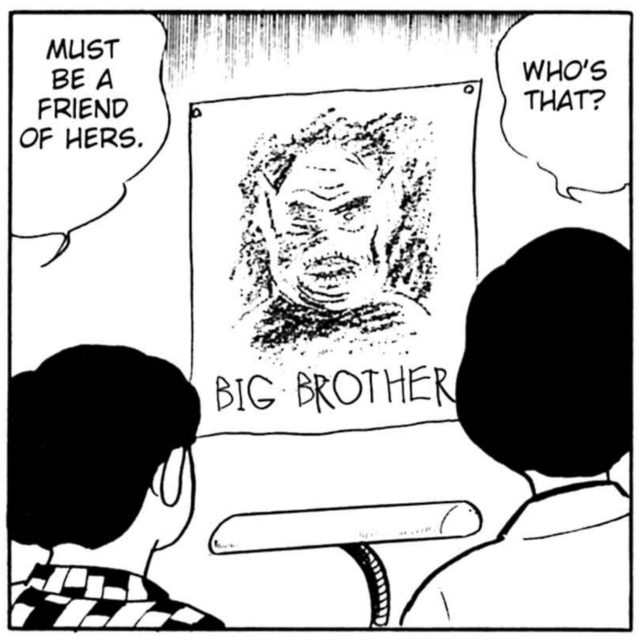 The dialogue in Mansect (originally serialized in the Shonen Champion weekly) isn’t particularly elegant. It can be pretty hokey and obvious, and dialogue drops in and out of nowhere that seems insufficient to the moment, as in a favorite bit towards the end where a physician responds to his wife’s relatively innocent question about the weather by saying “I hate to say it out loud…but it feels like the end of humanity is near.” It’s not a great book to read for high literary value. But honestly, the recent preeminence of horror as a ‘respectable’ genre has led to the appearance of highfalutin aesthetic values where none are needed isn’t necessarily a welcome development. It has its place, but Mansect gets in, does its expository business, and gets out, leaving the visuals to do the important work of scaring the hell out of the reader.
The dialogue in Mansect (originally serialized in the Shonen Champion weekly) isn’t particularly elegant. It can be pretty hokey and obvious, and dialogue drops in and out of nowhere that seems insufficient to the moment, as in a favorite bit towards the end where a physician responds to his wife’s relatively innocent question about the weather by saying “I hate to say it out loud…but it feels like the end of humanity is near.” It’s not a great book to read for high literary value. But honestly, the recent preeminence of horror as a ‘respectable’ genre has led to the appearance of highfalutin aesthetic values where none are needed isn’t necessarily a welcome development. It has its place, but Mansect gets in, does its expository business, and gets out, leaving the visuals to do the important work of scaring the hell out of the reader.
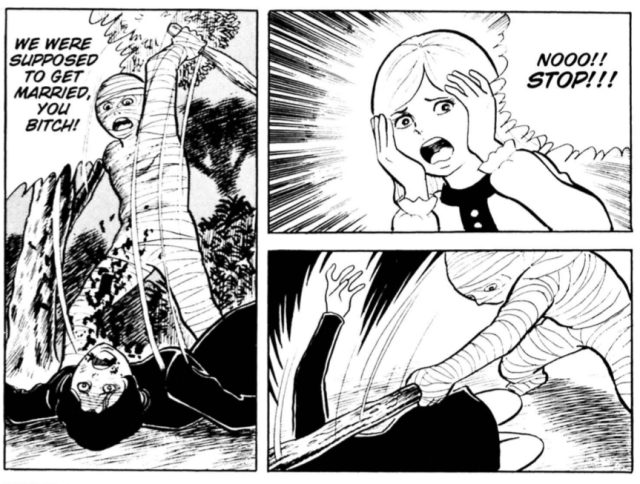 The book’s pacing is electric. Flitting from one unexpected development to the next, there’s not a wasted page between its covers. The visuals are stunning; it’s tempting to say that it recalls Junji Ito at his most nightmarish until you remember he was an adolescent when Mansect came out and that the influence likely worked the other way around. There are moments of such supreme creepiness that it stands along the best works of the genre, and it’s particularly effecting in reaching a balancing act between open shock-horror and the kind of insinuation and implication that fills good shonen horror with such a sense of dread. It manages to careen wildly from one story development to the next while always seeming to cohere, and its final section, as much as it just leaves planetary destruction on the table almost as an afterthought, also contains some of its biggest scares.
The book’s pacing is electric. Flitting from one unexpected development to the next, there’s not a wasted page between its covers. The visuals are stunning; it’s tempting to say that it recalls Junji Ito at his most nightmarish until you remember he was an adolescent when Mansect came out and that the influence likely worked the other way around. There are moments of such supreme creepiness that it stands along the best works of the genre, and it’s particularly effecting in reaching a balancing act between open shock-horror and the kind of insinuation and implication that fills good shonen horror with such a sense of dread. It manages to careen wildly from one story development to the next while always seeming to cohere, and its final section, as much as it just leaves planetary destruction on the table almost as an afterthought, also contains some of its biggest scares.
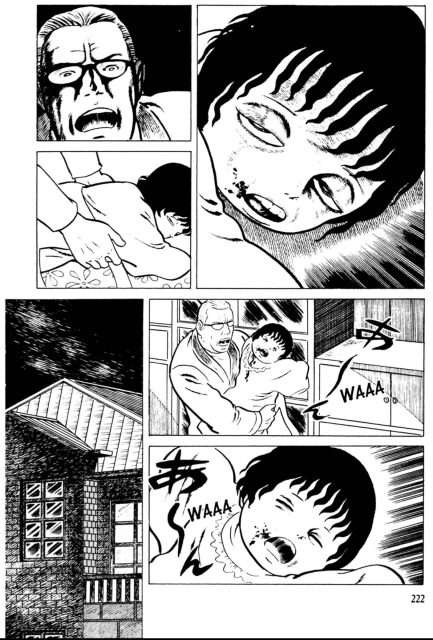 I wouldn’t really argue that there’s a ton of depth here – we are talking about a book, again, called Mansect – but the tremendous, unsettling use of body horror combined with some of the more disturbing psychosexual elements of the book, with mother as temptress, lover, and destroyer, gives it layers I didn’t really expect it to have. It doesn’t bother much with explanations, keeping the talking heads to an awkward minimum and letting rough hints and imputation do the light lifting the story requires. Most of all, its thick sheets of darkness, rough scares, and excellent use of both action and reaction in both the horrific reveals and the way its characters respond to them give it both a bleak cinematic quality suited to the 1970s era of ecological terror and the tone of early Japanese horror manga that has yielded great results since then.
I wouldn’t really argue that there’s a ton of depth here – we are talking about a book, again, called Mansect – but the tremendous, unsettling use of body horror combined with some of the more disturbing psychosexual elements of the book, with mother as temptress, lover, and destroyer, gives it layers I didn’t really expect it to have. It doesn’t bother much with explanations, keeping the talking heads to an awkward minimum and letting rough hints and imputation do the light lifting the story requires. Most of all, its thick sheets of darkness, rough scares, and excellent use of both action and reaction in both the horrific reveals and the way its characters respond to them give it both a bleak cinematic quality suited to the 1970s era of ecological terror and the tone of early Japanese horror manga that has yielded great results since then.
This is one of Smudge’s first efforts, and for many in the West who aren’t deeply immersed in the horror shonen world, it will be their first English-language exposure to the work of Shinichi Koga. It’s a very worthwhile introduction to a figure who deserves to take his spot among figures like Ito and Mizuki; it doesn’t waste time trying to be something that it isn’t, because what it is – a fast-paced and efficient work of compounding fear and mystery – is plenty good enough.
The post Mansect appeared first on The Comics Journal.

No comments:
Post a Comment